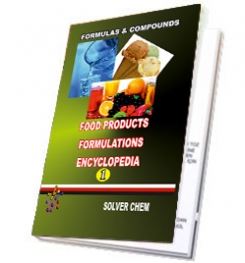
Emulsifiers are among the most frequently used types of food additives. They are used for many reasons.
Emulsifiers can help to make a food appealing. The example of the mayonnaise without the emulsifier shows how unappealing it would be if the oil and water separated before it was used. Emulsifiers have a big effect on the structure and texture of many foods. They are used to aid in the processing of foods and also to help maintain quality and freshness. In low fat spreads, emulsifiers can help to prevent the growth of moulds which would happen if the oil and fat separated. The table shows foods in which emulsifiers are most commonly used.
Lecithin
-
Extracted from vegetable oils such as soy and sunflower oil, lecithin has been used as a food emulsifiers since the 1930s. The number 184.1400 identities lecithin on the labels of food products in the United States. In Canada, lecithin is the equivalent of L.2 and in European products, E 322. Lecithin is used in a wide range of food products, including margarine, chocolate, breads and cakes, bubble gum, salad dressings and sauces.
-
Mono and diglycerides, as well as their purified form distilled monoglycerides, are the oldest and most common food emulsifiers. These emulsifiers are produced by mixing edible oils with glycerin, and widely used in bakery and dairy products, and margarine. On the label of food products, mono and diglycerides correspond to the number 182.4505 in the U.S., while in Canada it's M.4 and M.5. In Europe, the number E 471 identify these emulsifiers.
-
The combination of monoglycerides with other substances produces emulsifiers with specialized function called monoglyceride derivatives. For instance, ethoxylated monoglycerides are the result of the interaction between a monoglyceride and ethylene oxide. Other monoglyceride derivatives include acetoglycerides (172.828) and diacetyl tartaric esters of monoglycerides or DATEM (184.1101). They are common cake emulsifiers, because they increase the aeration of the dough.
-
Polyglycerol esters (PGE), propylene glycol esters (PGMS), stearoyl lactylates, sucrose esters, sorbitan esters and polysorbates are the most common food emulsifiers derived from fatty acids. PGE are used in cakes and icings, margarine and salad oils, while PGMS main application is whippable toppings. Stearoyl lactylates are used as dough strengtheners and conditioners in breads, while sorbitan and polysorbates are used for aeration in cakes and icings. Sucrose esters are also used in bubble gum, sauces, soups and canned liquid coffee.
Emulsions in food are mixtures of oil and water. These normally do not mix and will separate if left without an emulsifier. Roll over the photograph of the mayonnaise to see the effects when the emulsifier is not added.
Mayonnaise contains oil and water. The emulsifier keeps these mixed and without it the oil and water separate.
Roll over the picture to see mayonnaise without emulsifier.
What are emulsions?
There are two types of emulsions. An oil-in-water emulsion contains small droplets of oil that are dispersed in water. Alternatively, a water-in-oil emulsion has small droplets of water that are dispersed in an oil. Usually the water and oil will not mix and the emulsifier, or emulsifying agent, keeps the mixture stable and prevents the oil and water from separating into two layers.
Emulsifiers in food
Emulsifiers are among the most frequently used types of food additives. They are used for many reasons.
Emulsifiers can help to make a food appealing. The example of the mayonnaise without the emulsifier shows how unappealing it would be if the oil and water separated before it was used. Emulsifiers have a big effect on the structure and texture of many foods. They are used to aid in the processing of foods and also to help maintain quality and freshness. In low fat spreads, emulsifiers can help to prevent the growth of moulds which would happen if the oil and fat separated. The table shows foods in which emulsifiers are most commonly used.
RELATED TAGS : What is emulsifiers in foods, emulsifier in food properties, how to use emulsifiers in food, where to use food emulsifier, food ingredients, food chemicals, food materials, how much use food ingredients, food categories, food flavoring, food colorings. where to use emulsifiers, why to use food emulsifiers, properties of emulsifier in food products, usage of emulsifiers, formulations of food products.

FOOD PRODUCTS FORMULATIONS ENCYCLOPEDIA contains formulations and production process of following products that are natural ice cream formulations, fruit flavored ice cream preparation,composition of diet ice cream making, ice cream coatings compounds, natural ice lollies, instant fruit juice powder manufacturing process, fruit juice concentrations, fruit nectar making, formulations of flavored fruit juices, fruit flavored soda, diet and light fruit soda, chewing gum formulations, sugar free diet chewing gum production process, chewing gum flavored coating preparation, halvah and turkish delights compositions, sugar candy compounds,sugar hard candy types, nuts coatings, almonds coatings preparations, meat bouillions formulas, chicken bouillions manufacturing process, vegetable bouillons compositions, fish bouillon making, meat sausage preparation, chicken sausages, meat burger making, chicken burger preparations and etc.
|
|
|
|
|
|
|
|
|
